Genus Parkia Rank Species | ||
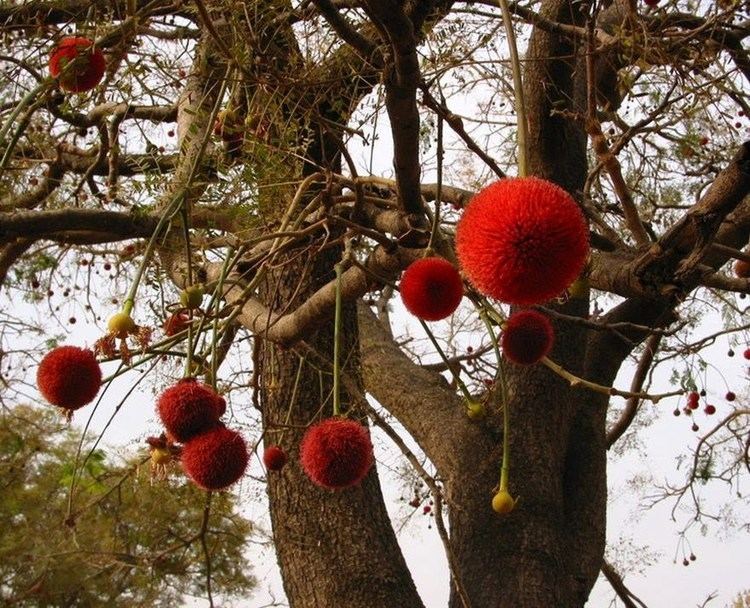 | ||
Similar Parkia, Legumes, Faidherbia, Khaya senegalensis, Prosopis africana | ||
Parkia biglobosa, also known as the African locust bean or néré, is a perennial deciduous tree of the Fabaceae family. It is found in a wide range of environments in Africa and is primarily grown for its pods that contain both a sweet pulp and valuable seeds. Where the tree is grown, the crushing and fermenting of these seeds constitutes an important economic activity. Various parts of the locust bean tree are used for medicinal purposes. As a standing tree, locust bean may have a positive effect on the yield of other nearby crops.
Contents
- Description
- History geography and ethnography
- Seed germination
- Agronomy Study
- Biophysical limitations
- Food
- Economic activity
- Medical
- References
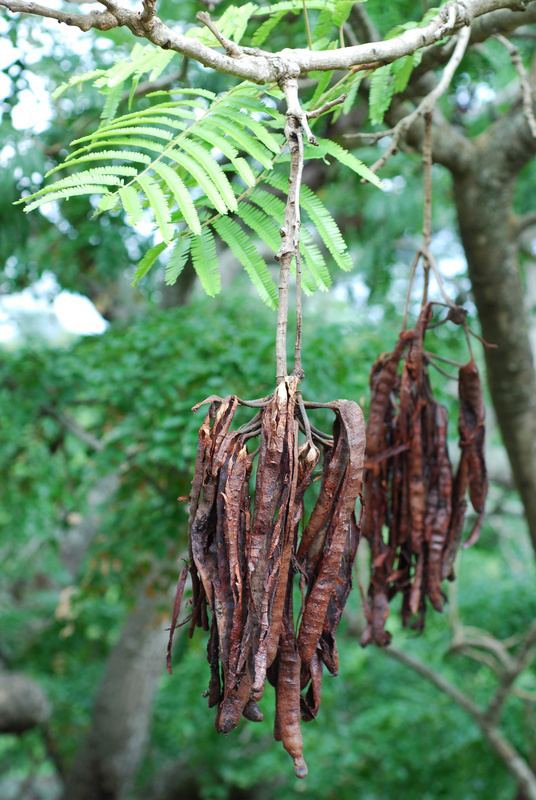
Description
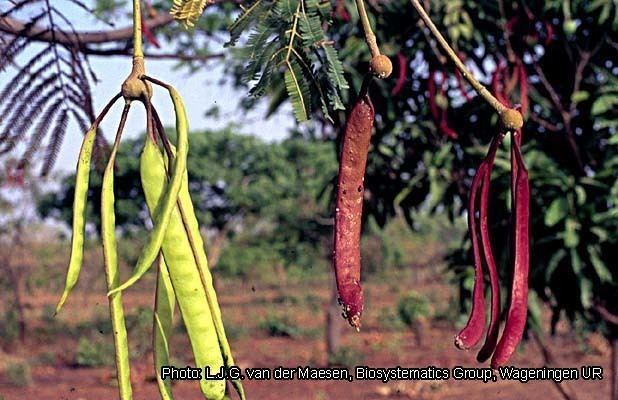
Parkia biglobosa is a dicotyledonous angiosperm belonging the family Fabaceae – Mimosoideae. It is categorized under spermatophytes, vascular plants. It is a deciduous perennial that grows to between 7 and 20 metres high, in some cases up to 30 metres. The tree is a fire-resistant heliophyte characterized by a thick dark gray-brown bark. The pods of the tree, commonly referred to as locust beans, are pink in the beginning and turn dark brown when fully mature. They are 30-40 centimetres long on average, with some reaching lengths of about 45 centimetres. Each pod can contain up to 30 seeds.
History, geography and ethnography
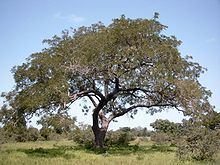
In West Africa the bark, roots, leaves, flowers, fruits and seeds are commonly used in traditional medicine to treat a wide diversity of complaints, both internally and externally, sometimes in combination with other medicinal plants. The bark is most important for medicinal uses, followed by the leaves. Medicinal applications include the treatment of parasitic infections, circulatory system disorders, such as arterial hypertension, and disorders of the respiratory system, digestive system and skin. In veterinary medicine, a root decoction is used to treat coccidiosis in poultry. Green pods are crushed and added to rivers to kill fish. The tree locust bean (also known as "arbre à farine, fern leaf, monkey cutlass tree, two ball nitta-tree, nété and néré") was first written of by Michael Adamson in 1757’s West Africa. The use of fermented locust beans in Africa, however, dates as far back as the 14th century.
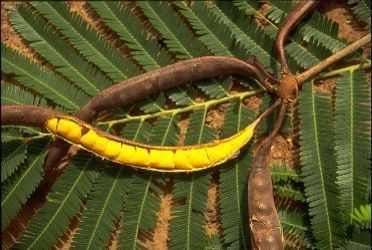
Geographically, Parkia biglobosa can be found in a belt stretching from the Atlantic coast in Senegal to southern Sudan and northern Uganda. The tree currently exists within a wide range of natural communities but is most abundant in anthropic communities – places where cultivation is semi-permanent.

Annual production of seeds in northern Nigeria is estimated at around 200 000t. While the products of the tree are not common in international trade, they form an important part of local and regional trade in West Africa. The seeds are especially prized, and much trade occurs locally in the Sahel region where they are transferred between borders.
Seed germination
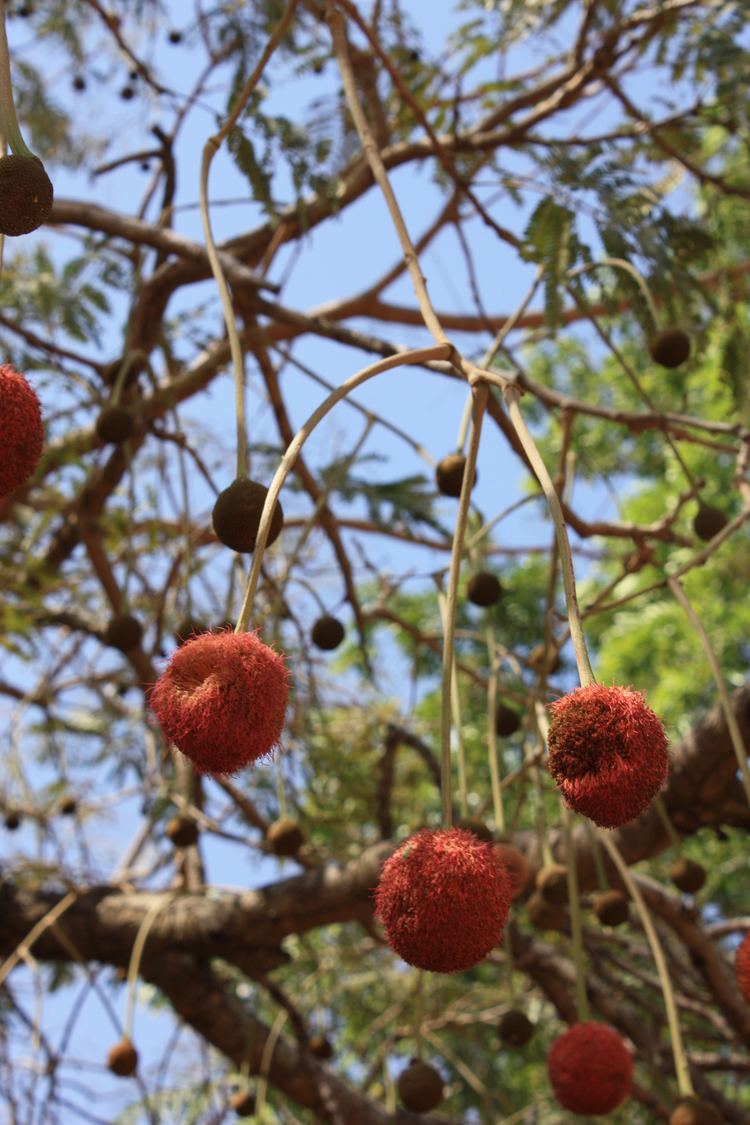
There are two types of seed within each pod – reddish-dark and dark (black). The ratio between these seeds varies from 1:20 to 1:5, with darker seeds outnumbering lighter seeds. Reddish-dark seeds have a thinner coat and they germinate earlier than black seeds that haven’t first been acid treated. “Dark seeds have a harder seed coat and require various pretreatments to ensure good germination rates.”

Although the seeds’ usual germination rate has been reported at 75%, germination can be improved by scalding for about 7 minutes, then soaking seeds in hot water overnight prior to planting. Locust tree seedlings “can be established vegetatively in nursery beds by grafting or budding, or by rooting adult cuttings.” These methods have shown good results in 11- to 25-year-old trees in Burkina Faso and Nigeria.
Agronomy Study
After the initial sowing into seed beds, seedlings at 3 days old can be transplanted into pots. Seedlings typically reach 20-25 centimetres tall after 20 weeks in the nursery, at which point they can be planted out into the field; direct sowing is possible, but its viability largely depends on soil moisture and the degree of insect/rodent threats. Preliminary ploughing “contributes to proper establishment of seedlings in the field with a success rate of 82% four years” in some cases after planting. Seeds can be treated with concentrated sulphuric acid “in a concentration of 97% for 10 minutes and then immersed in water for 24 hours to break their dormancy period.”
Seedlings grow comparatively fast – they can reach a height of 1 metre in just 1 year. They will begin to flower at 5–7 years during the dry season in the Sahel (December to April), while occurring slightly earlier in less dry regions. The tree is pollinated primarily by bats, but can also occur by way of “honeybees, flies, wasps, ants, tenerionid beetles and tettigometid bugs.” Fruiting can occur at anywhere from 5–10 years, and they will start to ripen just before the first rains and continue over most of the season.
Foliage of locust bean has been found to contribute to soil fertility improvement. In one experiment, the isolated relative effect of locust bean in the third year of the experiment was 86%, compared to 138% for neem, a related tree. The relative index of soil productivity during this time clearly appreciated for locust bean, as well as the accumulation of P and organic C compared with neem.
Shade tolerance of other crops planted the near locust bean tree may present additional problems. In a 2-year experiment on shading, Parkia biglobosa was “found to have suppressive effects on vegetative growth and yield of pearl millet in both years.” Eggplant yields were also suppressed by trees to between one third and one tenth of the yield in controlled plots, which themselves were damaged by rain. Despite this, chilli pepper yields (which were also affected by rain in the controlled plots) increased by up to 150% under the canopy of the locust bean tree.
Biophysical limitations
The tree of the African locust bean requires “between 0-300 metres of altitude, a mean annual rainfall of between 400-700 millimetres and a mean annual temperature of about 24-28°C.” It prefers well-drained, thick clay soils but can also be found on shallow, thin sandy soils.
Food
The yellow pulp, which contains the seeds, is naturally sweet “and is processed into a valuable carbohydrate food known as sikomu and daddawa among the Yoruba, Igbo and Hausa people of Nigeria, respectively.” However the most valuable parts of the locust bean, and possibly the entire tree, are the seeds themselves which are high in lipid (29%), protein (35%), carbohydrate (16%), and is a good source of fat and calcium for rural dwellers. Seeds are often made into a nutritious spice or condiment, called dawadawa, which is beloved in large parts of Africa. The seed is first cooked to remove the seed coat and then fermented to produce the desired result. In a study conducted on the fermentation of dawadawa, it was found that Gmelina arborea as well as banana leaves accelerated fermentation of seeds, while also bringing “an increase in protein, crude fat and moisture contents with corresponding decrease in carbohydrate.”
Economic activity
The cultivation of this tree can be seen as an important economic activity for many in Africa, including a large portion of women. Néré fruits are highly commercialized in Burkina Faso; “over 50% of respondents in a nation-wide survey said they participated in its trade.” In general, women are wholly responsible for the sale of fermented seeds (dawadawa) even though both men and women are equally responsible for the sale of dry seeds.
Medical
Indigenous healers in Africa use different parts of the locust bean tree for health benefits. In a survey conducted on healers in Togo, Parkia biglobosa was one of the highest cited plants used for treating hypertension. The tree was also one of two plants “listed as having real wound-healing properties in South-Western Nigeria, influencing the proliferation of dermal fibroblasts significantly.” In a similar survey conducted in Guinea relating to their use of antimalarial plants, Parkia biglobosa was cited among those most often successfully used. In an analysis on the antibacterial properties of the plant, another study found that “these properties compare favourably with those of streptomycin, making it a potential source of compounds used in the management of bacterial infections.”
